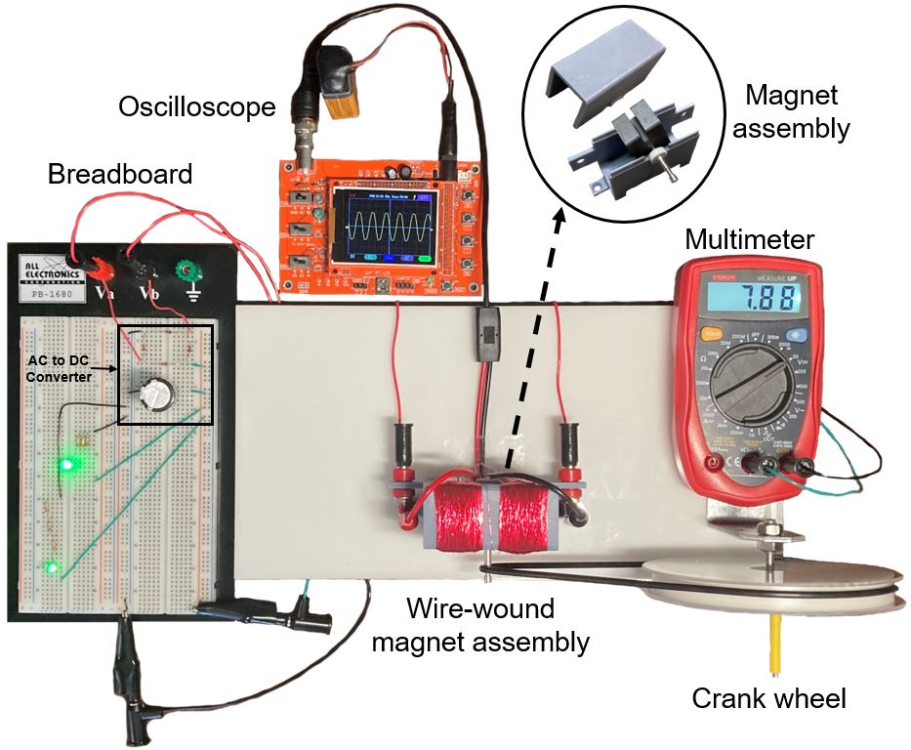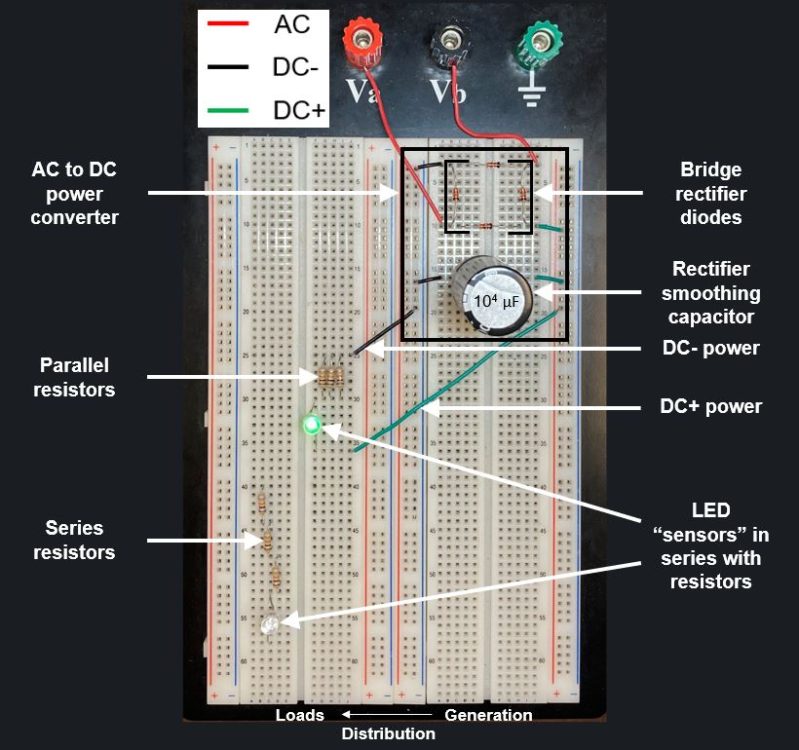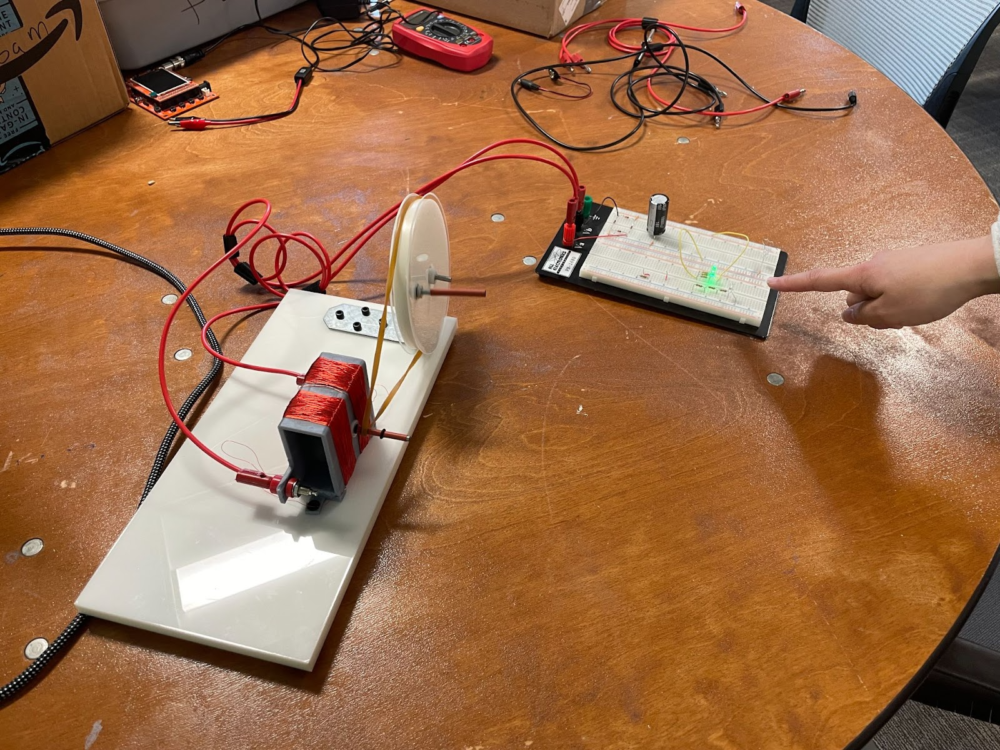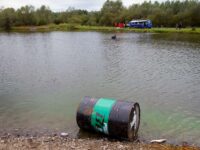On Wednesday, May 3, four Roxbury high school students and a couple of Northeastern undergraduate volunteers built mini wind turbines as part of an energy education pilot program. The motivation behind the event was not only to teach students about the generation and conversion of energy but also to try out accompanying learning modules with students for the first time. Members of the Boston Electrochemical Society (ECS) and the Technology and Education Center for Renewable Energy (TECRE) collaborated to lead the event and design the mini wind turbine components and learning modules.
The high school students came from a local extracurricular youth center called Roxbury Youth Programs. All of the participating students are aspiring to study STEM-related fields, so they came to the event willing to learn. This event gave students the opportunity to learn the basics of energy and electronics as preparation for post-secondary education, especially since these topics aren’t always required in high school curricula.

“Education on these sorts of things starts at the youth level and [broadens] the scope of renewable energy, so it’s more accepted in the future generations,” said rising second-year chemistry major and TECRE’s chief operating officer Sage Matzker. According to Matzker, TECRE is also looking to educate the citizens of Puerto Rico on renewable energy, so this type of event could be adapted to a variety of age groups in different locations around the world.
Matzker introduced this particular event with a presentation about the lab and relevant concepts. Students then worked in pairs to assemble an electrical generator and a breadboard and finally connect all the pieces together to build a tool mimicking wind turbines.
First, the students wrapped copper wire around an enclosed magnet and attached a crank wheel to the magnet. Turning the crank wheel — analogous to wind spinning a turbine — generates alternating current in the wrapped wire. Next, students set up the electrical breadboard with components including a capacitor for storing energy, similar to battery farms capable of storing large amounts of energy in the electric grid, and LED light bulbs, mimicking the energy usage by households. Finally, the students connected measurement devices including an oscilloscope for graphing an electrical signal and a multimeter for measuring voltage.


Although there wasn’t enough time to build and troubleshoot all the components, the students said they learned something and had fun building the tool. Jackson Smith, vice president of ECS and a PhD student in the Department of Chemistry and Chemical Biology at Northeastern said that the students “legitimately wanted to try out [the modules] for training and were genuinely curious about the topics at hand. That made it a really fun process for me.”
When TECRE tests the modules next, Smith suggested that they could remove a few extra steps or extend the lab by an hour. Extending the lab would ensure that if students run into difficulties, they would have enough time to troubleshoot on their own. After a couple more iterations of testing the modules, teachers and professors could introduce the final product into lab classes for middle and high schools, as well as colleges. One university, Caribbean University in Puerto Rico, has already decided to deploy learning modules like those tested at the event. At the college level, this lab could look like two three-hour lab sessions with one session focused on building the tool and the second on designing the circuits to ensure in-depth enough coverage of content and plenty of time for troubleshooting.
I think being able to see it used in a more concrete setting and have real-life applications was something that was interesting to me. It was so fun!’ said Liang.
One of the Northeastern volunteers, Vanessa Liang, a rising third-year student studying data science and chemistry said, “I’ve been relatively curious about electrochemistry. I’ve never done a lot with it until analytical chemistry this semester where I learned a lot more about electrochemistry, and I think being able to see it used in a more concrete setting and have real-life applications was something that was interesting to me. It was so fun!”

For younger students, these modules could serve as a way to “level the playing field” so students are already familiar with electricity and energy concepts by the time they get to college. However, these modules will also give people of all ages the ability to apply what they learn to the real world. While TECRE designed the crank wheel project as a model for wind power, similar projects could model solar power and other renewable energy sources.
The modules can also act as a gateway into understanding battery recycling and refurbishment: a new and booming research area in the energy and sustainability research fields. The capacitor, which stored energy in the mini system, could be replaced in actual wind turbines by refurbished hybrid car batteries, a material whose potential has been applied by Eugene Smotkin, a Northeastern professor of chemistry and chemical biology and founder of TECRE. Although hybrid car batteries lose capacity over time, Smotkin found that they can be reconditioned for reuse in hybrid vehicles and other clean energy systems.
The end goal of these learning modules is to teach all age groups about renewable energy systems and how the next generation of engineers and scientists can develop and maintain these systems.
The end goal of these learning modules is to teach all age groups about renewable energy systems and how the next generation of engineers and scientists can develop and maintain these systems. Since TECRE designed these modules to be adaptable, they could easily include more or less content based on age group, time, and materials available. Ultimately, they offer an experiential, user-friendly way of learning about current energy systems as well as possibilities for future energy systems.





